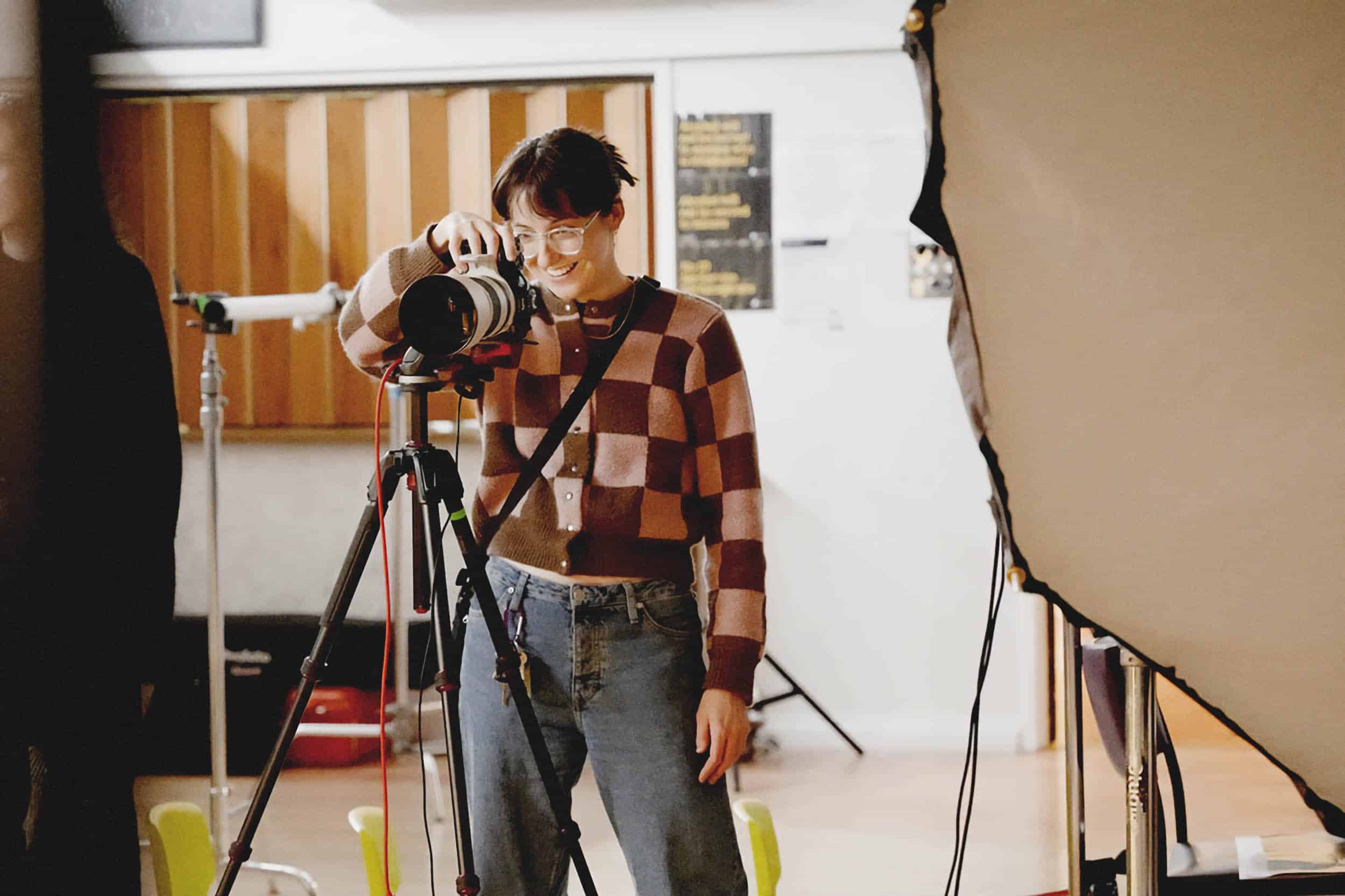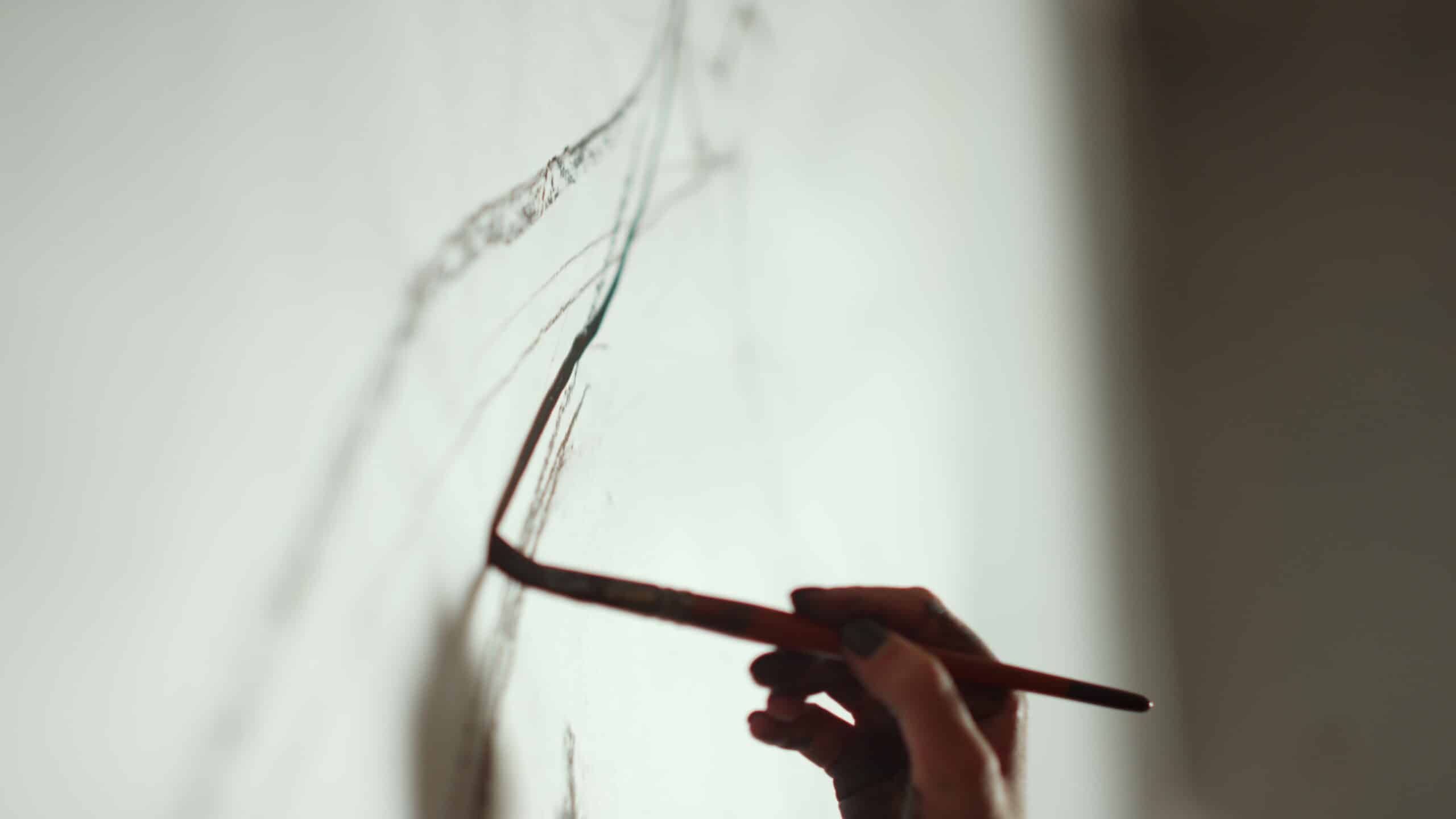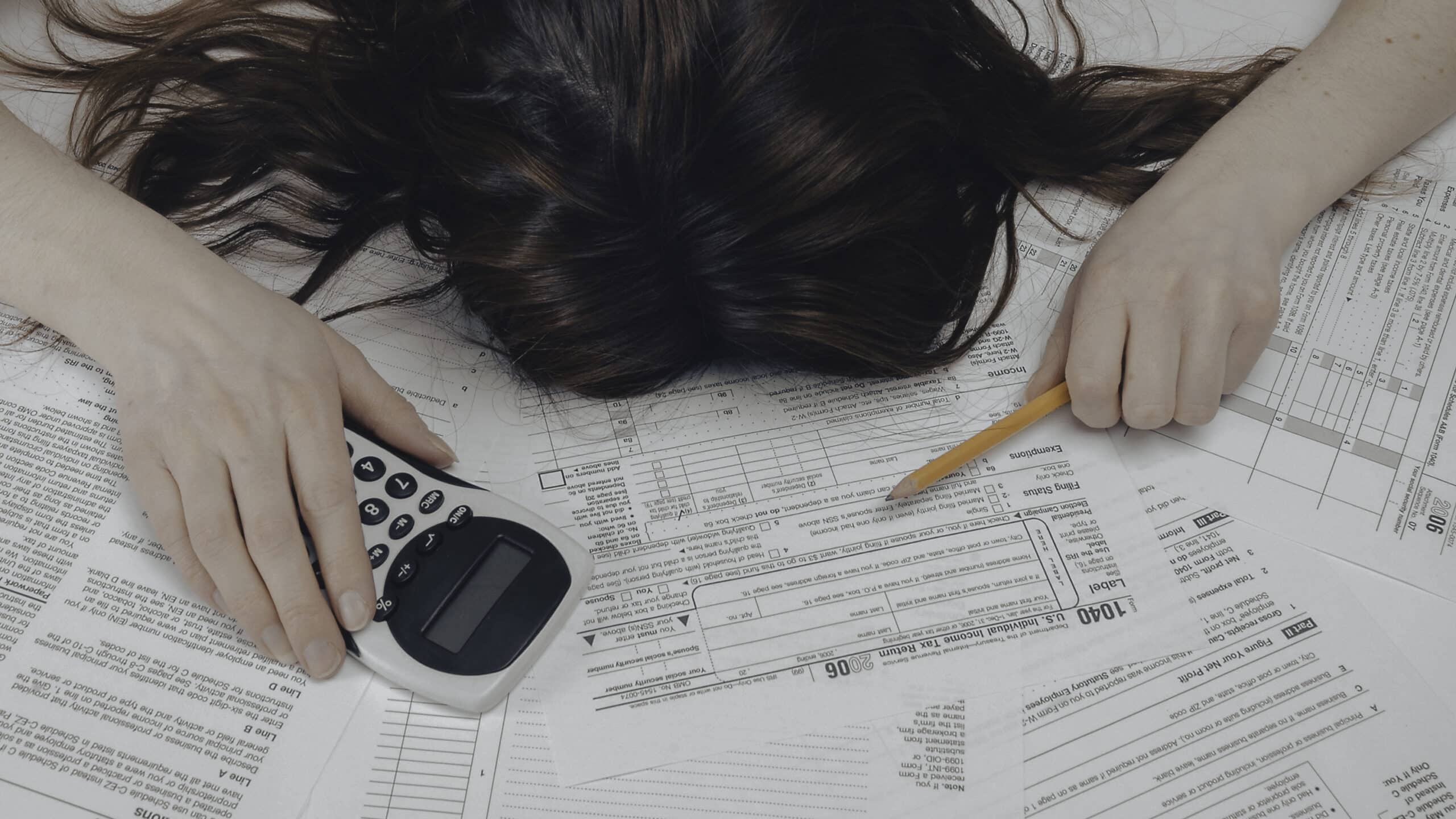Les courriels de fin d'année sont un moyen efficace de communiquer avec vos clients et votre liste de diffusion, c'est-à-dire avec les personnes qui s'investissent dans vos ambitions créatives, au sujet de votre croissance cette année. En fait, les e-mails de fin d'année sont probablement l'un des outils marketing les plus sous-utilisés et les plus rentables dont disposent les professionnels de la création, en raison de leur taux d'engagement supérieur à la moyenne.
Tout au long de l'année, la communication avec les clients peut prendre différentes formes. Réponse aux demandes de renseignements des clients potentiels, mise en place d'enquêtes de satisfaction, le marketing d'événements spéciaux ou de mises à jour du magasinet l'envoi de notes personnalisées avec une commande sont autant d'exemples de communication avec les clients. Vos clients actuels et potentiels font partie de votre liste de diffusion parce qu'ils apprécient l'expertise et la touche personnelle d'un professionnel indépendant de la création comme vous. Une communication efficace avec vos clients, telle que l'envoi d'un courriel de fin d'année, a le pouvoir de renforcer la relation que vous entretenez avec vos clients.
Une communication efficace avec les clients
Lorsqu'il s'agit de la communication avec les clients, la qualité est importante. Les gens sont exposés à la communication des marques dans leur vie de tous les jours, jusqu'à 50-400 annonces par jour par le biais des seules publicités. Contrairement aux publicités, les clients acceptent de recevoir des communications de votre part, ce qui signifie qu'ils veulent vous entendre.
Alors, comment un professionnel de la création peut-il se frayer un chemin à travers le bruit ? En commençant par un peu de planification et de prévoyance pour les considérations ci-dessous :
Fixer des objectifs clairs
Pour commencer, il est important de réfléchir à la stratégie qui sous-tend votre message. Si vous avez eu une année bien remplie, il peut être tentant de partager toutes les informations sur tout ce que vous avez fait. Au lieu de cela, dressez une liste des travaux, des expositions ou des annonces commerciales que vous souhaitez faire connaître à vos lecteurs. Choisissez-en quelques-uns qui sont les plus importants ou qui ont le plus d'impact et développez-les avec un peu plus de détails. Certains éléments de votre liste pourraient devenir des liens vers de nouvelles œuvres sur votre site web, des expositions avec des galeries en ligne qu'ils peuvent consulter, des articles dans votre boutique en ligne ou d'autres endroits où ils peuvent trouver plus de détails sur ce qui les intéresse le plus.
Surtout, réfléchissez à ce que vous aimeriez que vos lecteurs fassent le plus, s'ils ne font qu'une seule action suite à votre courriel. Il peut s'agir de vous commander une œuvre, de visiter une exposition ou un marché d'artistes à venir, ou d'acheter vos œuvres d'art dans votre boutique en ligne. Quel que soit cet objectif, assurez-vous qu'il est le plus clair possible et qu'il attire l'attention des lecteurs grâce à un appel à l'action.
Se mettre à la place de son public
Une grande partie de l'efficacité de la communication consiste à répondre aux besoins et aux souhaits de votre public. Il convient notamment de réfléchir aux informations que votre public pourrait souhaiter consommer sur la base des contenus efficaces que vous avez partagés par le passé par le biais d'e-mails et de médias sociaux, et d'examiner ce qui n'a pas fonctionné afin de pouvoir tester différents sujets ou différentes mises en page d'e-mails. Il peut être difficile d'examiner son propre travail d'un point de vue neutre. Si vous rencontrez des difficultés, il peut être utile qu'un collègue ou un ami relise votre projet et vous fasse part de ses suggestions.
Rédiger des messages engageants et personnalisés
Après avoir élaboré un plan de ce que vous voulez dire, il est temps de réfléchir à la manière de le dire. Les meilleurs messages sont engageants et mémorables. C'est ce qui ressort des slogans les plus intemporels et les plus mémorables. Prenons par exemple le slogan d'Apple : Think Different. À l'instar des slogans, la communication avec les clients est plus efficace lorsqu'elle est courte, agréable et directe. Le temps est une denrée précieuse de nos jours, et il en va de même pour le temps qu'il faut à une personne pour comprendre votre message. Montrez à votre public que vous respectez son temps en prenant le temps d'éditer et d'éliminer le superflu de vos écrits.
Bien entendu, être succinct ne signifie pas être ennuyeux. Le ton et le langage utilisés dans votre message doivent évoquer les sentiments que vous éprouvez vous-même pour le sujet traité. Pensez à la façon dont vous l'expliqueriez dans une conversation, incluez des adjectifs et des verbes d'action pertinents qui enthousiasment le public autant que vous, puis simplifiez ou révisez votre message s'il devient trop long.
Choisir le bon support
Vous avez peut-être déjà entendu dire que le support est le message. Cette phrase du théoricien canadien de la communication Marshall McLuhan a été transposée au XXe siècle. Elle signifie que les différentes plates-formes de communication ont leurs propres attentes et implications.
Ceci est important pour les professionnels de la création car les attentes de leur public quant au type de contenu partagé varient en fonction de la manière dont ils ont été conditionnés à utiliser ces canaux de communication. Voici quelques exemples des différentes attentes des consommateurs en matière de contenu, en fonction du média utilisé :
- Facebook : Contenu basé sur les centres d'intérêt et pertinent au niveau local
- Instagram : Annonces, contenu vidéo soigné et images de style de vie.
- Twitter : Des nouvelles de dernière minute sous forme de petites bouchées
- Courriel : Annonces, liens curatifs et reçus
- Blog : Contenu de longueur moyenne qui s'adresse à la base de fans
- Site web : Annonces, communiqués et blogs
Bien que cela puisse paraître simple, le fait de placer votre message sur un mauvais support peut entraîner une faible audience ou, pire encore, donner l'impression que votre marque n'est pas en phase avec les pratiques de communication modernes.
Considérations relatives au temps et à la fréquence
Tout comme la clarté est une gentillesse que vous pouvez offrir au destinataire de vos communications, il est important d'être attentif au moment choisi. Par exemple, les baisses de produits et les offres en édition limitée peuvent être utilisées de manière stratégique et annoncées par surprise. En revanche, les événements doivent être annoncés au moins une ou deux semaines à l'avance pour que les gens aient le temps d'en faire une priorité dans leur emploi du temps.
Une autre façon d'aborder la question du timing consiste à exploiter le retour d'information sous la forme de données simples que de nombreuses plateformes numériques fournissent sous la forme d'indicateurs. Le nombre de vues, le taux d'ouverture, le temps d'attente et le nombre de clics sont quelques-uns des indicateurs que les professionnels de la création peuvent utiliser pour savoir quel type de contenu est le plus performant, ainsi que l'heure de la journée et le jour de la semaine qui donnent les meilleurs résultats. Enfin, la fréquence de la communication doit également être prise en compte. Les messages trop fréquents peuvent conduire les abonnés à se désabonner s'ils ont l'impression d'être bombardés par vos messages.
Rédiger un courriel de fin d'année
Lorsqu'il s'agit de composer et d'envoyer un courriel de fin d'année, décembre ou janvier sont les mois idéaux. Bien que vous puissiez également envoyer un courriel en milieu d'année, pour marquer l'anniversaire d'une entreprise ou pour partager ou lancer un nouveau travail ou une exposition à venir, ces mois sont le meilleur moment pour partager les mises à jour de fin d'année. Il s'agit généralement des réalisations que vous souhaitez mettre en avant, des changements dans votre travail ou votre entreprise, des événements à venir et des remerciements adressés aux personnes qui vous suivent pour leur participation à votre parcours créatif. Il est important que votre message de fin d'année reste simple et que vous teniez compte des actions que vous souhaitez que votre public entreprenne à la lecture de votre message.
Objectif et avantages
Quelle histoire voulez-vous raconter aux gens à propos de votre entreprise ? L'objectif d'un courriel est d'observer une réalisation et de réfléchir aux fruits de votre travail au cours des 365 derniers jours calendaires, afin de communiquer l'un des messages suivants à votre public :
- Rappeler aux personnes qui connaissent votre marque que vous existez
- Élargir la compréhension de vos capacités et de vos compétences
- Inspirer les gens à vous réserver pour de futurs projets
- Célébrez votre croissance avec votre fanbase
L'objectif de l'e-mail peut également être une compilation de ce qui précède, ou votre propre objectif. Il est important d'identifier la raison pour laquelle vous souhaitez envoyer un courriel de fin d'année afin que le reste du contenu que vous proposez puisse diriger de manière cohérente le destinataire vers votre objectif, en particulier l'appel à l'action (CTA) du courriel.
Conception de votre courrier électronique
Toute communication émanant de vous doit ressembler à votre marque, s'en inspirer et s'y sentir à l'aise. Il en va de même pour les messages électroniques. Pour ce faire, vous pouvez utiliser des logos, des polices, des couleurs et des traitements d'image (tels que des préréglages d'édition ou des filtres) associés à votre marque - en fait, vous devez les relier à ces mêmes éléments sur votre site web.
Si vous n'en utilisez pas déjà un, il peut être utile de créer un fichier contenant toutes ces informations en un seul endroit pour pouvoir s'y référer facilement. Il peut s'agir d'un simple document dans votre espace de stockage en nuage préféré et doit généralement contenir les éléments suivants :
- Les polices de votre marque pour les différents en-têtes et le texte normal.
- Codes hexadécimaux pour toutes les couleurs et précisions sur les couleurs primaires et les couleurs d'accentuation.
- Noms de vos préréglages d'édition préférés (le cas échéant)
- Lignes de conduite ou messages que vous utilisez souvent
- Liens vers les dossiers dans lesquels vous stockez vos fichiers de logo dans une solution de stockage basée sur le cloud, telle que Google Drive, iCloud, Dropbox, etc.
- Votre biographie ou votre CV, pour un accès facile.
La cohérence de la voix de votre marque est un moyen simple de montrer votre professionnalisme et de faciliter l'identification de vos communications dans la foule d'entreprises qui se disputent l'attention des gens. De nombreux programmes de conception vous permettront également d'enregistrer les couleurs et les polices de votre marque, ce qui simplifiera le processus de création de bulletins d'information et d'autres graphiques de marque.
Texte d'approche
Essayez de limiter les paragraphes à 1-3 phrases chacun, en utilisant des phrases courtes et des mots faciles à comprendre. Vous pouvez également utiliser divers modules pour créer une hiérarchie visuelle et fluidifier votre courrier électronique afin qu'il ne soit pas trop chargé en texte.
Pour un bilan de l'année, il est judicieux de dresser une liste de tous les sujets que vous souhaitez aborder. Vous pouvez inclure la liste dès le départ pour susciter l'impatience, ou passer directement aux éléments eux-mêmes.
Ajout d'éléments visuels
Si vous pensez aux courriels que vous n'hésitez pas à lire, il est probable qu'ils soient axés sur l'aspect visuel, avec de larges espaces blancs pour permettre à l'œil de se reposer. Pensez à appliquer les mêmes principes aux courriels que vous envoyez à votre propre liste de diffusion.
Évitez d'utiliser des images de stock, qui risquent d'inciter les gens à ignorer votre courriel. Incluez plutôt des images de votre travail, une photo de vous, et/ou des images des coulisses ou du processus pour ajouter une touche personnelle.
Enfin, commencez et terminez votre courriel par votre logo, si vous en avez un. Le vieil adage marketing selon lequel "on se souvient de la première et de la dernière chose que l'on lit" s'applique également aux choses que l'on voit.
À quoi ressemble un courriel de fin d'année ?
Cela peut varier en fonction du type de professionnel créatif que vous êtes, de l'étape suivante que vous souhaitez voir franchir par les personnes qui vous suivent et de votre public. Les éléments que vous souhaitez mettre en avant peuvent être très différents selon que votre public est commercial ou directement consommateur.
Vous trouverez ci-dessous un exemple de courriel de fin d'année envoyé par un artiste céramiste.
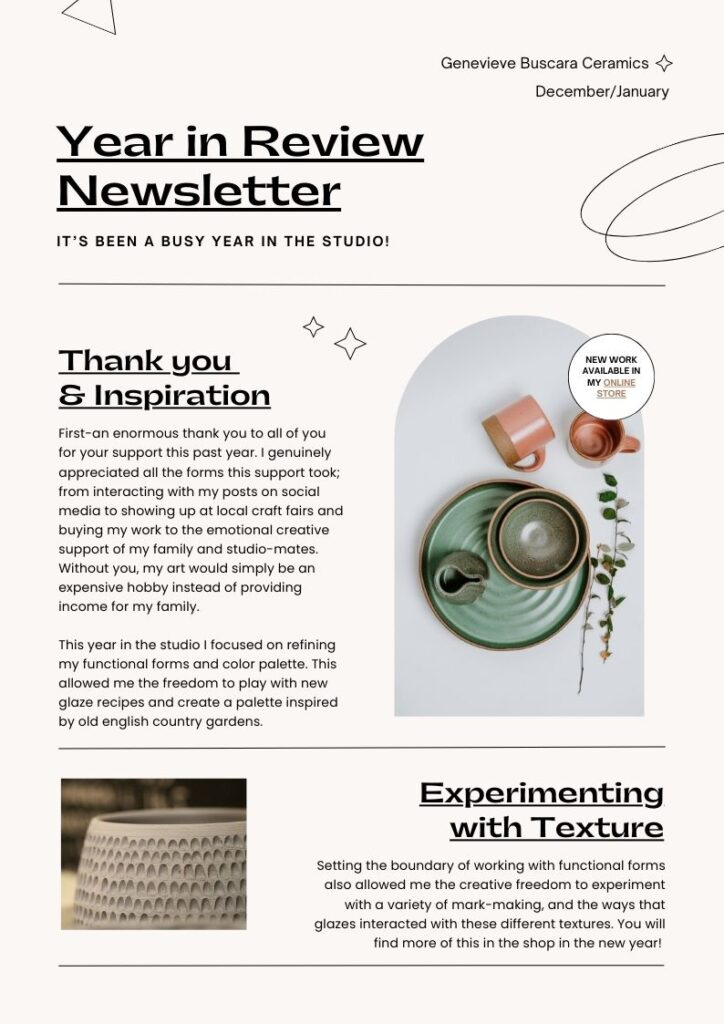
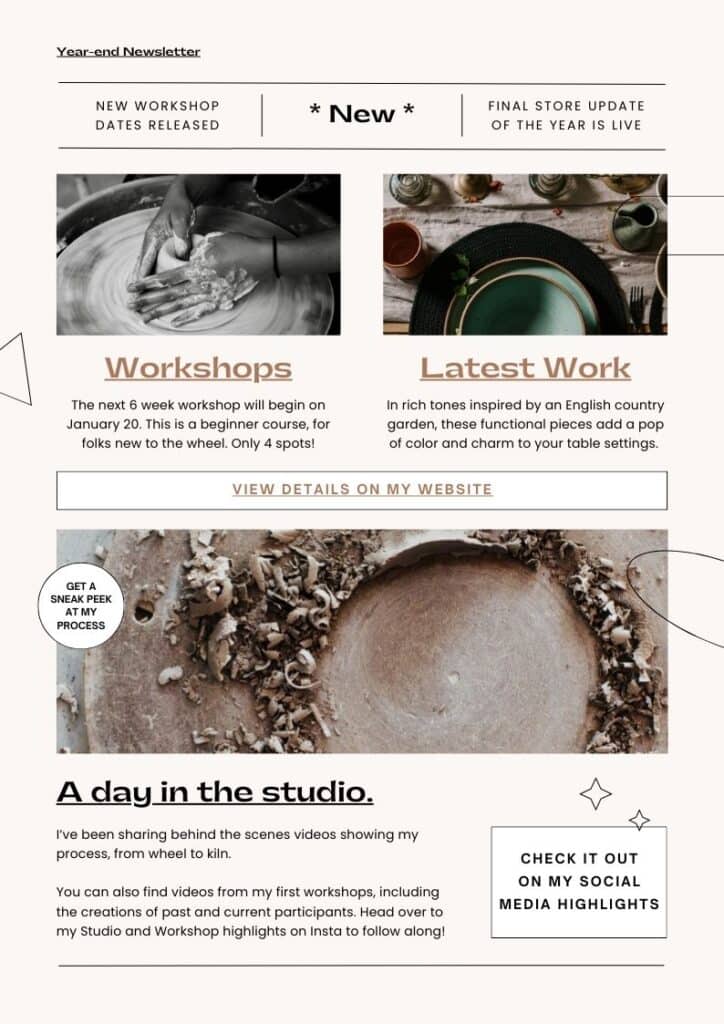
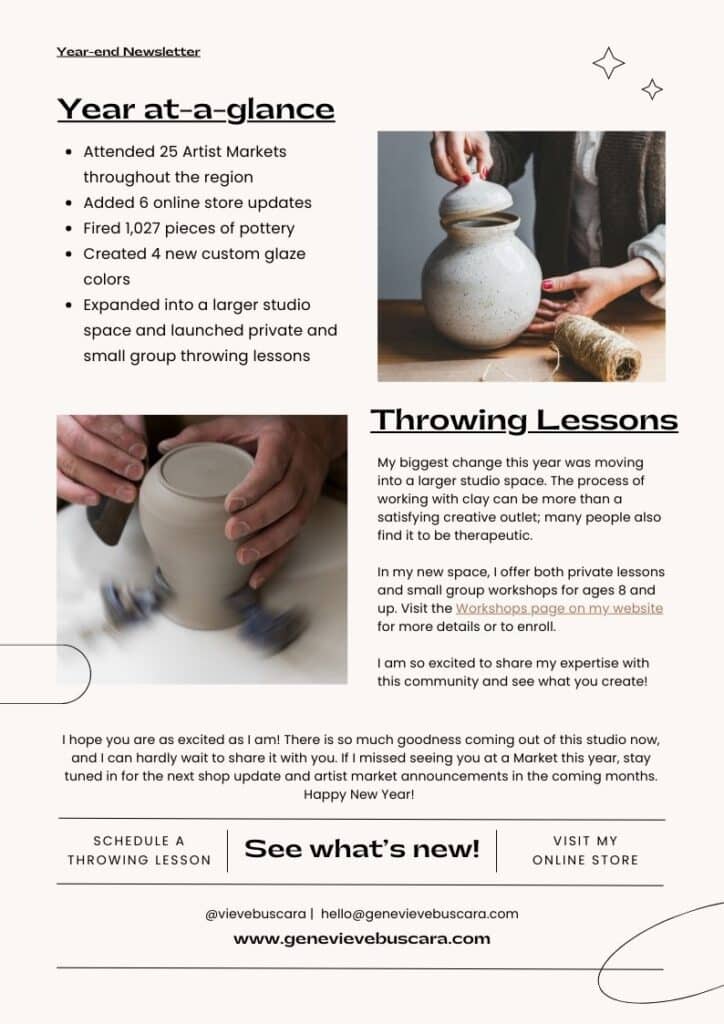
Comme vous pouvez le voir, l'artiste s'est concentré sur quelques éléments principaux pour le corps de l'e-mail : les nouvelles œuvres dans le magasin et les possibilités d'atelier. Ces idées sont répétées tout au long du message, avec des informations légèrement différentes à chaque fois.
Ils ont également inclus une liste de contrôle des principales réalisations qui sont pertinentes pour leur entreprise et leurs clients, sans les submerger de détails sur chaque élément. Les images de leur travail servent à la fois à découper le texte et à montrer des exemples de leurs dernières céramiques disponibles à la vente.
Les appels à l'action (CTA) sont clairs tout au long de la page, y compris les liens vers les pages du site web référencées dans le texte et le profil des médias sociaux. Nous reviendrons plus tard sur les CTA.
Adapter le message aux différentes professions
Au cours des premières années d'existence de votre liste de diffusion, il est important de poser des bases adaptées à votre secteur d'activité. Par exemple, les artistes, les designers, les illustrateurs, les photographes, les cinéastes, les créateurs de mode, les coiffeurs et les maquilleurs raconteront tous leur histoire un peu différemment. Plus le support est visuel, plus les destinataires de la liste de diffusion attendent des éléments visuels de l'e-mail, et vice versa. Les professionnels de la création qui travaillent et vendent directement aux consommateurs devront généralement injecter un peu plus de leur voix personnelle et de leur histoire dans leurs communications, tandis que ceux qui travaillent avec des galeries ou des marques commerciales devraient adopter une approche plus professionnelle et plus directe.
En cas de doute, envisagez d'élaborer un plan de communication simple pour l'année, qui indique la fréquence et les sujets potentiels de vos communications avec votre public. Ce plan vous permettra d'anticiper les messages destinés à votre public et de savoir quand annoncer des événements et des offres importants.
Mettre en valeur les réalisations
Considérez votre courriel de fin d'année comme une brève exposition de votre production créative au cours de l'année écoulée. Prenez le temps de réfléchir aux expériences que vous souhaitez célébrer et aux raisons pour lesquelles elles vous semblent significatives. Voici quelques thèmes fréquemment utilisés :
- Présentation de nouveaux travaux ou de vos progrès dans la maîtrise d'un médium
- Raconter une réussite à partir de son expérience personnelle
- Obtention d'un prix ou d'une certification
- Partager votre point de vue depuis les coulisses
- Donner un aperçu de projets futurs passionnants
Si vous avez besoin d'aide pour démarrer, nous avons rassemblé quelques éléments à inclure dans votre bulletin de fin d'année, classés par profession.
Artistes
Pour les artistes qui créent des œuvres destinées au grand public (consommateurs), votre lettre d'information de fin d'année serait très similaire à l'exemple de l'artiste céramiste, et mettrait l'accent sur des sujets tels que
- Marchés d'artistes et foires artisanales auxquels vous avez participé et où vous avez vendu vos œuvres.
- Des mises à jour sur le type de travail que vous proposez actuellement, telles que les dates de disponibilité des nouveaux travaux, les sources d'inspiration ou les thèmes abordés dans votre travail.
- Changements dans votre pratique artistique, grandes annonces, etc.
Artistes qui exposent et vendent leurs œuvres principalement par l'intermédiaire de galeries pourraient être mis en avant :
- Liste des expositions individuelles ou collectives auxquelles vous avez participé, y compris des liens vers les vues d'ensemble de l'exposition de la galerie ou vers la page de votre site contenant des photographies de l'exposition.
- Les travaux commandés que vous aimeriez partager ou reconnaître.
- Expositions à venir dans les prochains mois.
- Les nouveaux thèmes ou concepts que vous explorez, accompagnés d'une documentation sur votre travail.
Concepteur/Illustrateur
Concepteurs et illustrateurs peuvent profiter de cette occasion pour partager quelques-uns de leurs projets créatifs ou de commande préférés. Il peut s'agir de
- Les produits marketing que vous avez créés, tels que les affiches, les brochures ou les éléments de marque.
- Maquettes et/ou projets achevés pour des espaces architecturaux ou intérieurs.
- Liste des expositions passées et à venir, y compris les liens pour les voir ou obtenir plus d'informations.
- Reconnaître ou énumérer les prix que vous avez reçus, les événements sociaux et les interviews en ligne ou dans les magazines.
Photographes
Photographes La création d'un travail essentiellement commercial pourrait être mise en évidence :
- Des images et un bref résumé de vos prises de vue ou de vos campagnes avec de grandes marques et des clients de premier plan.
- Un aperçu des projets personnels ou créatifs que vous êtes prêt à partager.
- Liens vers des portfolios actualisés comprenant vos travaux récents.
- Disponibilité pour les projets à venir ou informations sur la manière de réserver vos services.
Lorsqu'un photographe se spécialise dans le travail avec le grand public, comme les photos de tête, les mariages et autres portraits, il est important de mettre l'accent non seulement sur ce qui distingue son travail, mais aussi sur l'expérience exceptionnelle qu'il offre à ses clients. Cela peut ressembler à ce qui suit :
- Des témoignages de clients qui témoignent de votre professionnalisme, de votre cohérence et de l'expérience positive qu'ils ont eue en travaillant avec vous.
- Une liste des points forts qui pourrait inclure le nombre de séances ou d'événements que vous avez photographiés cette année, le meilleur service et/ou produit que les clients ont choisi, le nombre d'images que vous avez éditées, et toute autre étape importante ou engageante.
- Des images de quelques-unes de vos prises de vue préférées, avec au moins une photo des coulisses ou un portrait de vous.
- des informations sur votre programme de recommandation, afin de rappeler à vos clients comment ils peuvent être récompensés pour avoir parlé de vous et de votre entreprise
Les photographes d'art en quête d'inspiration pour leur lettre d'information de fin d'année peuvent suivre les recommandations destinées aux artistes qui travaillent avec des galeries, car leur public sera généralement très similaire. Selon que vous proposez ou non des ateliers à d'autres photographes, vous pouvez également ajouter des détails :
- Prochaines conférences ou ateliers au cours desquels d'autres photographes pourront apprendre de vous.
- Quelques détails sur un ou deux de vos équipements les plus utilisés ou les plus utiles lors d'une prise de vue.
Cinéastes
Avec le chevauchement évident des compétences, et quelques cinéastes Si vous proposez également des services de photographie, il est logique de puiser des idées qui vous correspondent dans les thèmes de la lettre d'information électronique sur la photographie. Nous vous recommandons également d'inclure certaines de ces suggestions :
- Incluez une brève vidéo d'introduction pour un ou deux de vos projets cinématographiques les plus excitants, avec un lien vers la vidéo plus longue sur votre site web de portfolio en ligne, ou des informations sur l'endroit où vos followers peuvent trouver la vidéo complète.
- Quelques détails sur les coulisses, pertinents pour votre public, tels que les personnes avec lesquelles vous avez travaillé sur un projet, le matériel utilisé, ou le processus de réflexion derrière vos décisions créatives et la raison pour laquelle elles ont rendu le film plus attrayant ou captivant sur le plan visuel.
- Faites un clin d'œil au reste de l'équipe créative avec laquelle vous avez travaillé sur certains de vos projets préférés, à votre équipe habituelle ou à quelques personnes clés qui ont fait la différence au cours de votre année.
- Mettez en avant les projets à venir ou les dates à attendre pour l'annonce des nouvelles sorties de films.
- Méthode de contact pour les personnes souhaitant faire appel à vos services, avec un lien vers la page de contact de votre site web.
Mode/HMUA (coiffeur et maquilleur)
Créatif les professionnels de l'industrie de la mode et de la beauté devront tenir compte de leur marque et de leur public afin de trouver le bon équilibre entre le professionnel et le personnel. Voici quelques idées pour vous aider à démarrer :
- Images professionnelles de mannequins ou de célébrités entièrement stylisés, mettant en valeur votre travail.
- Photos ou vidéos des coulisses de votre processus créatif
- Avant/après pour les travaux de l'HMU, afin de montrer la différence
- Une liste de marques, de mannequins ou de célébrités avec lesquels vous avez travaillé, de magazines ou de marques en ligne dans lesquels vous avez figuré, ainsi que les noms des collections que vous avez lancées cette année.
- La disponibilité de vos dessins ou produits de marque dans votre boutique en ligne, ou une date pour la prochaine version, et un lien vers votre boutique.
Pour les HMUA qui travaillent principalement avec le grand public plutôt qu'avec des professionnels de l'industrie de la mode ou de la rédaction, vous devez également inclure des détails sur l'expérience client, tels que
- Le nombre de clientes de mariage ou de clientes ayant participé à une séance de photos cette année.
- Témoignages de clients sur leur expérience de travail avec vous.
- Liens vers votre portfolio en ligne, mis à jour avec quelques-uns de vos travaux les plus récents.
- Votre disponibilité - si votre agenda se remplit déjà, c'est le moment de le faire savoir à vos followers et de leur indiquer comment réserver vos services !
Une fois que vous avez dressé une liste d'options possibles, essayez de trouver un fil conducteur qui pourrait aider à structurer votre courrier électronique ou à lui donner un thème unificateur. Si vous n'y arrivez pas, pensez à la communauté de votre liste de diffusion et posez-vous la question suivante : "Quel genre d'e-mails est-ce que j'aime lire de la part de mes créatifs ou collectifs préférés ?"
Appel à l'action
Il est important de se rappeler que la plupart des courriels sont destinés à servir de passerelles vers d'autres destinations, telles que votre portefeuille en ligne et les comptes de médias sociaux. Lorsque le lecteur ouvre votre courriel, il comprend implicitement que celui-ci est destiné à l'inciter à cliquer quelque part pour voir ou accéder à quelque chose. Le texte de l'appel à l'action (Call to Action, CTA) sert d'invitation et indique clairement l'action que vous souhaitez que votre public entreprenne.
La plupart des CTA utilisent un verbe d'action et ne dépassent pas 5 mots. Voici quelques exemples courants :
- Réservez votre place
- Accès immédiat
- Rejoindre la communauté
- Parcourir ma collection
- Demande de consultation
- Lire notre histoire
- Nouveaux arrivages
- Partez à l'aventure
- Obtenir un devis personnalisé
- Parcourir par support
- Prendre contact
- Emmenez-moi là-bas
Différents CTA fonctionnent mieux en fonction de l'objectif de l'e-mail et de l'audience. En cas de doute, reportez-vous à la liste ci-dessus pour trouver la bonne formulation d'un CTA pour votre e-mail de fin d'année, et adaptez-la à votre marque.
Ne réfléchissez pas trop, envoyez l'e-mail
Avant de vous dissuader d'envoyer un courriel de fin d'année, ne voulant pas contribuer au "bruit" pendant cette période chargée de l'année, il est important de se rappeler que votre public a consenti à recevoir vos messages. Cela signifie qu'ils se sont inscrits à votre liste de diffusion parce qu'ils aiment recevoir des messages de personnes créatives comme vous. Ainsi, vous avez déjà une longueur d'avance sur la plupart des autres supports de marketing : votre public est captif.
Accorder à la communication avec les clients l'attention qu'elle mérite profite à tout le monde : à votre public, qui veut entendre parler de votre travail, et à votre entreprise. Les lettres d'information électroniques des créateurs indépendants sont importantes parce qu'elles contribuent à donner de la visibilité à vos efforts et vous donnent l'occasion de faire une pause et de réfléchir à vos réalisations.
Rédiger des courriels de fin d'année efficaces n'est pas sorcier
Lorsque vous élaborez la structure et le contenu de votre lettre d'information de fin d'année, n'oubliez pas les points suivants :
- Identifiez votre public et l'objectif de l'envoi du courrier électronique.
- Les messages doivent être courts et précis
- Inclure des images pertinentes pour découper le texte et ajouter un intérêt visuel.
- Personnaliser le contenu en fonction de votre marque personnelle et de votre secteur d'activité
- Susciter l'intérêt avec un texte engageant et un CTA fort
Lorsqu'il s'agit de votre entreprise, vous êtes l'expert en la matière. Il n'y a pas de mauvaise façon de rédiger un courriel de fin d'année, à condition que vous l'abordiez avec le même niveau de réflexion que celui que vous apportez à votre travail créatif.






